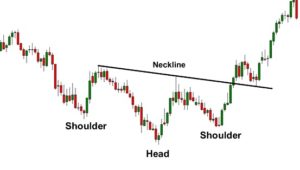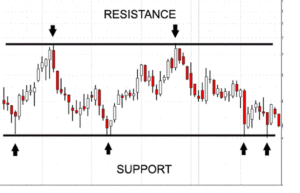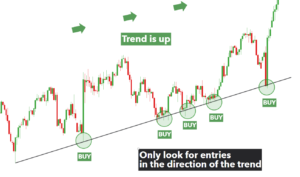Chart patterns are the basis of technical analysis that requires a trader to know exactly what they are looking at, as well as what they are looking for. A chart pattern or price pattern is a pattern within a chart when prices are graphed. In stock and commodity markets trading, chart pattern study plays a larger role during the technical analysis. When data is plotted there is usually a pattern which naturally occurs and repeats over a period. Technical analysts have long used price patterns to examine current movements and forecast future market movements.
The assumption is made that trading results can be improved when trading skills are improved. This requires practice! Surely any time spent learning to trade on past historical data, will not be wasted when it comes to preparing to trade for the future.
TYPES OF CHART FORMATION:
Here you will learn some types of chart formations. These formations will help you to improve your trading skills.
1. TRENDLINES:
Trendlines shows the direction & speed of price, and also describes the chart patterns during periods of price contraction. Let’s discuss about which types of trendlines we can drawn:
a. INCLINING TRENDLINE
A straight line is usually drawn to define an uptrend against or through price bar low.
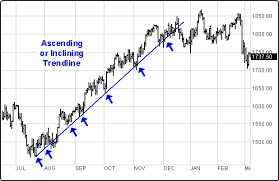
b. DECLINING TRENDLINE
A straight line usually drawn to define a downtrend against or through price bar high.
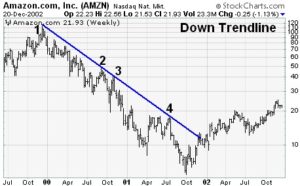
c. SUPPORT
In general terms, the Support level is a price point on the chart where the traders expects maximum demand (in terms of buying) coming into the stock/index. Typically, support can be identified on a chart by a previous set of lows.
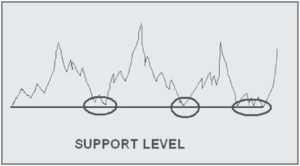
d. RESISTANCE
Resistances are used by traders to refer to price level on the chart. A horizontal ceiling where the pressure to sell is greater than the pressure to buy. Therefore, an increase in price is reversed and prices revert downward. Typically resistance can be located on a chart by a previous set of highs.
 2. CHANNELS:
2. CHANNELS:
a. INCLINING CHANNELS
The inclining channel is a formation with parallel price barriers along both the price ceiling and floor. Unlike the sideways channel the inclining channel has an increase in both the price ceiling and price floor.
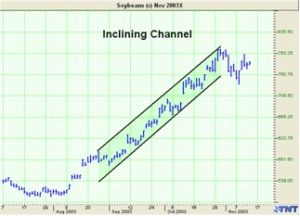
b. DECLINING CHANNEL
A descending channel is drawn by connecting the lower highs and lower low of a security’s price with parallel trendlines to show a downward trend.
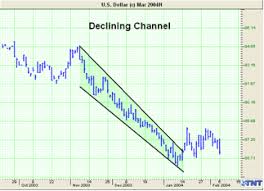
c. HORIZONTAL OR SIDEWAYS CHANNEL
A horizontal or sideways is a formation that features both support and resistance. Support forms the low price bar, while resistance provides the price ceiling.
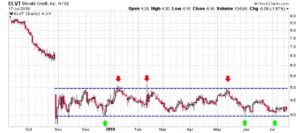
3.TRIANGLE:
a. SYMMETRICAL TRIANGLE
A symmetrical triangle is a chart pattern characterized by two converging trend lines connecting a series of sequential peaks and troughs. These trend lines should be converging at a roughly equal slope.
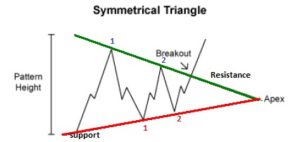
b. ASCENDING TRIANGLE
A continuation pattern. Price contracts with level swing highs (short term resistance) and higher swing lows (rising trendline) towards a single point. The pattern is confirmed on a break of short term resistance, usually occurring in the final third of the pattern.
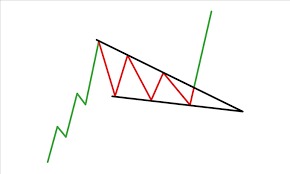
c. DESCENDING TRIANGLE
A Continuation pattern. Price contracts with lower swing highs (falling trendline) and level swing lows (short term support) towards a single point. A pattern is confirmed on a break of short term support, usually occurring in the final third of the pattern.
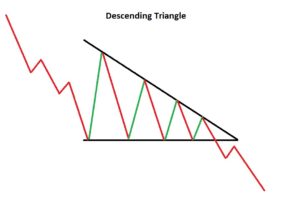
d. PENNANT TRIANGLE
A continuation pattern. Price forms a short term symmetrical triangle pattern (smaller scale than the usual symmetrical triangle). The pattern is confirmed on a break of the pennant in the continuation direction.
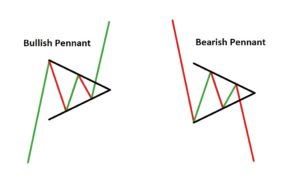 4. WEDGES:
4. WEDGES:
a. RISING WEDGE
A continuation or reversal pattern. Price forms higher swing highs and higher swing lows which both converge towards one point. The pattern is confirmed on a break of the lower trendline of the pattern.

b. FALLING WADGE
A continuation or reversal pattern. Price forms lower swing highs and lower swing lows which both converge towards one point. The pattern is confirmed on a break of the upper trendline of the pattern.
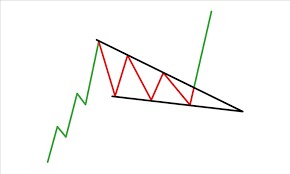
5. FLAG:
A continuation pattern. Price forms a short term consolidation, tilted against the direction of the market trend, between approximately parallel sloping support & resistance. The pattern is confirmed on a break of the pattern in the continuation direction.

6. DOUBLE TOP:
A reversal pattern at the top of an uptrend. Price forms to highs at approximately the same price level. The pattern is confirmed on a break of the intermediate swing low.
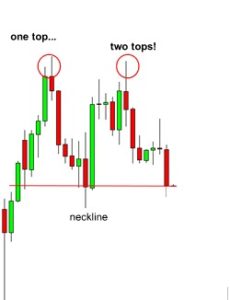
7. DOUBLE BOTTOM:
A reversal pattern at the bottom of a downtrend. Price forms two swing lows at approximately the same price level. The pattern is confirmed on a break of the intermediate swing high.
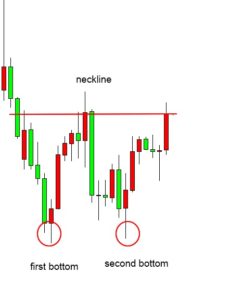
8. TRIPLE TOP:
A reversal pattern at the top of an uptrend. Price forms three swing highs at approximately the same price level. The pattern is confirmed on a break of the lowest of the intermediate swing lows.
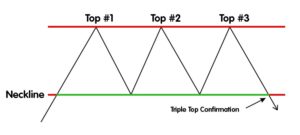
9. TRIPLE BOTTOM:
A reversal pattern at the bottom of a downtrend. Price forms three swing lows at approximately the same price level. The pattern is confirmed on a break of the highest of the intermediate swing highs.
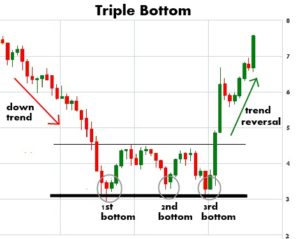
10. ROUNDED TOP:
Anticipate change in price from up to down.
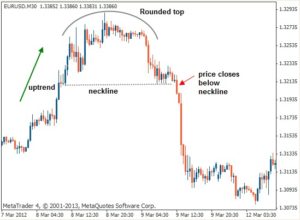
11. ROUNDED BOTTOM:
Anticipate a change in price from down to up.

12. HEAD & SHOULDERS:
A reversal pattern at the top of an uptrend. Price forms a swing high, a higher swing high, and a lower swing high. The pattern is confirmed on a break of the neckline – the line joining the intermediate swing lows.
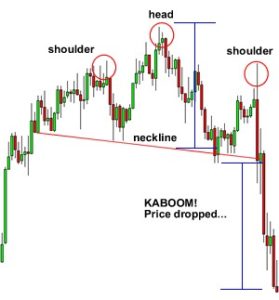
13. INVERTED HEAD AND SHOULDERS:
A reversal pattern at the bottom of a downtrend. Price forms a swing low, a lower swing low, and a higher swing low. The pattern is confirmed on a break of the neckline – the line joining the intermediate swing high.
